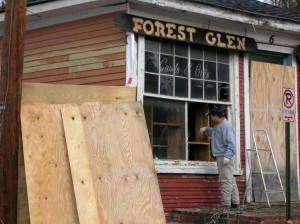guest blogger: Lisa Mroszczyk
There is another angle to the sustainability argument.
Rehabilitation projects are labor intensive rather than materials intensive. The need for skilled labor creates jobs that are often sourced locally, whereas manufacturers of materials for new construction are not. This results in more dollars going to people within the community, who turn around and spend that money locally, contributing to the viability of the local economy.
Donovan Rypkema, with the Washington, D.C.-based real estate and economic development consulting firm PlaceEconomics, completed a study on The Value of Historic Preservation in Maryland in 1999 which asked “Does historic preservation mean jobs?” The study concluded that, “In Maryland the answer is an unequivocal ‘yes.’” The report also found that every $1,000,000 spent rehabilitating historic buildings in Maryland created 16.3 construction jobs, 15.4 jobs elsewhere in the economy, and $761,300 increase in total household income.
Rypkema also found that rehabilitation created 3.2 more jobs than the same amount spent on new construction; a good thing to ponder during National Preservation Month. So remember, next time you choose to reinvest in older and historic buildings or live in a historic home, you are contributing to a sustainable economy.
